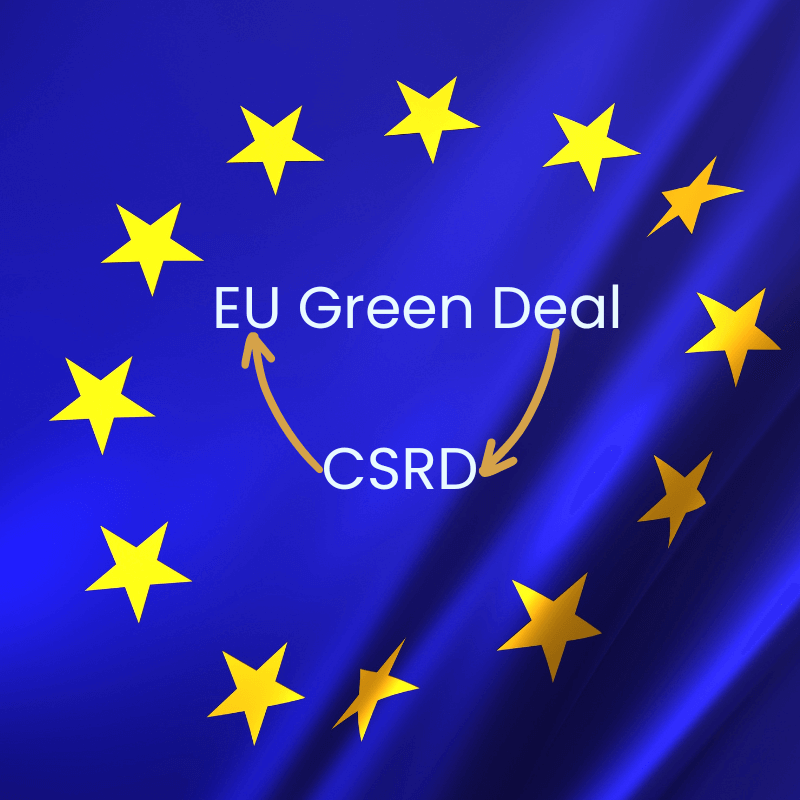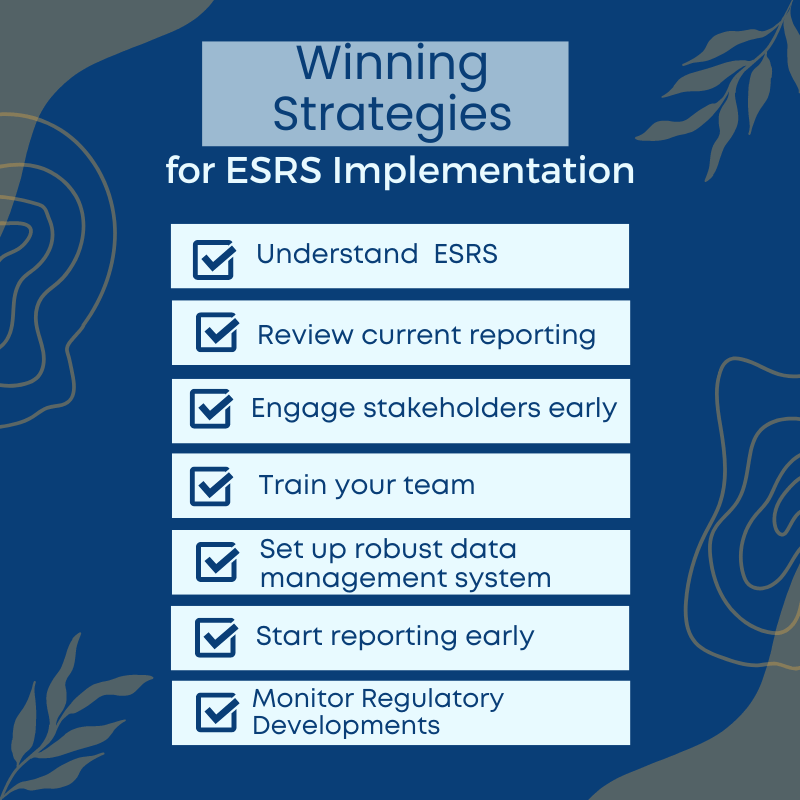The Corporate Sustainability Reporting Directive (CSRD) plays an integral role in enhancing the transparency and accountability of corporations. In essence, it’s a tool meant to empower investors, stakeholders, and society at large, enabling them to understand how companies are addressing their environmental, social, and governance responsibilities. The European Union (EU) Green Deal, a landmark commitment to make Europe the first climate-neutral continent by 2050, has significantly influenced the formation of CSRD. Let’s take a deep dive into this relationship and understand its implications.
Understanding the EU Green Deal: A Comprehensive Overview
The EU Green Deal, also known as the European Green Deal, is a groundbreaking initiative within the EU aimed at transforming the European Union into a sustainable, climate neutral economy by 2050. With its ambitious and encompassing measures, the EU Green Deal promises a green transition, reshaping all economic sectors and society as a whole.
Unravelling the Elements of the EU Green Deal
Announced by the European Commission in December 2019, the EU Green Deal is more than just an action plan to fight climate change and environmental degradation. It’s a growth strategy aimed at transforming the EU’s climate and energy policies, making Europe’s economy sustainable while enhancing the use of energy and reducing greenhouse gas emissions.
There are several elements to this green deal, each significant in its own way. The initiative includes targets for energy efficiency, increased use of renewable energy, promotion of energy efficiency in buildings, and drastic reduction of CO2 emissions. All these efforts aim at achieving climate neutrality by 2050 and reducing greenhouse gas emissions by 55% by 2030, compared to 1990 levels.
Policy Areas Covered by the EU Green Deal
1. Investment Plan: With an aim to mobilise at least €1 trillion in sustainable investments over the next decade, the European Green Deal Investment Plan will play an important role in supporting the transition to a climate-neutral economy.
2. EU Climate Law: Introduced in 2020, the European Climate Law aims to enshrine the 2050 climate neutrality target into law, ensuring that all EU policies contribute towards this goal and all sectors of the economy and society play their part.
3. Biodiversity: The EU Biodiversity Strategy for 2030 aims to protect and restore biodiversity within the EU, addressing the key drivers of biodiversity loss.
4. Farm to Fork Strategy: This strategy aims to make food systems fair, healthy, and environmentally friendly, transforming the way we produce, distribute, and consume food.
5. Circular Economy: A key element of the green deal, the Circular Economy Action Plan aims to reduce waste and keep resources in use for as long as possible.
6. Zero Pollution Action Plan: Aimed at creating a toxic-free environment, this plan sets out to prevent and reduce air, water, and soil pollution.
7. New European Bauhaus: This initiative combines design, sustainability, accessibility, affordability, and investment to help deliver the European Green Deal.
8. European Climate Pact: The pact aims to engage citizens and communities in action for our climate and environment, fostering a culture of cooperation and shared responsibility.
The 8 Actions of the EU Green Deal
With numerous initiatives in the works, the European Green Deal has outlined eight specific actions to transform the EU into a sustainable and climate-neutral society by 2050:
1. Clean Energy: Ensuring a secure and affordable energy transition, while achieving climate neutrality.
2. Sustainable Industry: Helping industries innovate and become global leaders in clean and circular products.
3. Building and Renovating: Enhancing energy efficiency in buildings and promoting sustainable construction.
4. Sustainable Mobility: Promoting cleaner and healthier means of private and public transportation.
5. Biodiversity Conservation: Protecting and restoring ecosystems and biodiversity.
6. From Farm to Fork: Developing a fair, healthy, and environmentally friendly food system.
7. Eliminating Pollution: Achieving a zero-pollution ambition for a toxic-free environment.
8. Climate Action: Mobilizing research and fostering innovation to combat climate change.
How the EU Grean Deal Shapes the CSRD?

The CSRD is shaped by the EU Green Deal in a number of ways.
First, the CSRD requires companies to report on their greenhouse gas emissions. This is in line with the EU Green Deal’s goal of reducing greenhouse gas emissions by 55% by 2030.
Second, the CSRD requires companies to report on their use of natural resources. This is in line with the EU Green Deal’s goal of making Europe a resource-efficient economy.
Third, the CSRD requires companies to report on their social and governance performance. This is in line with the EU Green Deal’s goal of creating a more just and equitable society.
The CSRD is an important step in the EU’s journey towards a more sustainable future. By requiring companies to report on their sustainability performance, the CSRD will help to raise awareness of sustainability issues and encourage companies to take action to reduce their environmental impact.
Here are some additional ways in which the EU Green Deal shapes the CSRD:
- The CSRD requires companies to use the European Sustainability Reporting Standards (ESRS), which were developed in line with the EU Green Deal’s sustainability principles.
- The CSRD requires companies to have their sustainability reports externally assured. This will help to ensure that the reports are accurate and reliable.
- The CSRD includes a number of compliance measures, such as fines for non-compliance. This will help to ensure that companies comply with the directive.
The CSRD is a significant piece of legislation that will have a major impact on corporate sustainability reporting in the EU. It is a key part of the EU’s efforts to achieve its climate neutrality goals and create a more sustainable future.
Your Next Step on the CSRD Compliance Journey
Are you ready to spearhead your company’s sustainability journey and stand out from the crowd? The Corporate Sustainability Reporting Directive (CSRD) and European Sustainability Reporting Standards (ESRS) are not only coming but are here, and your next steps are critical.
Mastering the complexities of the CSRD and ESRS can seem like a daunting task. However, overcoming this challenge doesn’t just mean compliance with new laws – it’s an opportunity to show your commitment to a sustainable future, to gain a competitive edge, and to attract stakeholders who value responsibility.
We know it might be overwhelming, but you’re not alone in this journey. Imagine having all the necessary tools, knowledge, and support at your fingertips. That’s where The CSRD Compass steps in. We’re your ultimate guide to everything CSRD and ESRS, offering a rich collection of resources ranging from detailed guides and insightful articles to comprehensive courses and expert analysis. Navigating this new terrain of sustainability reporting has never been easier!
Don’t wait for tomorrow. The time to act is now. Embark on your sustainability reporting journey today, prepare your business for a sustainable future and make a real impact on our planet. Visit The CSRD Compass today, and let’s shape a greener future together!


